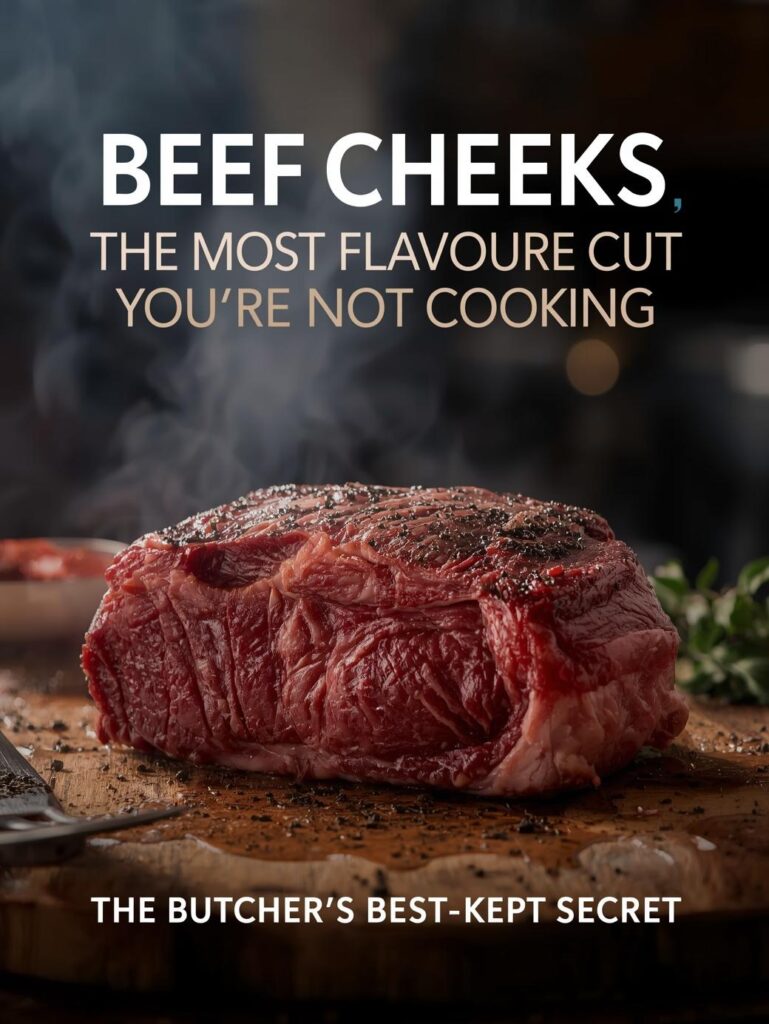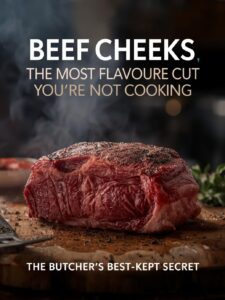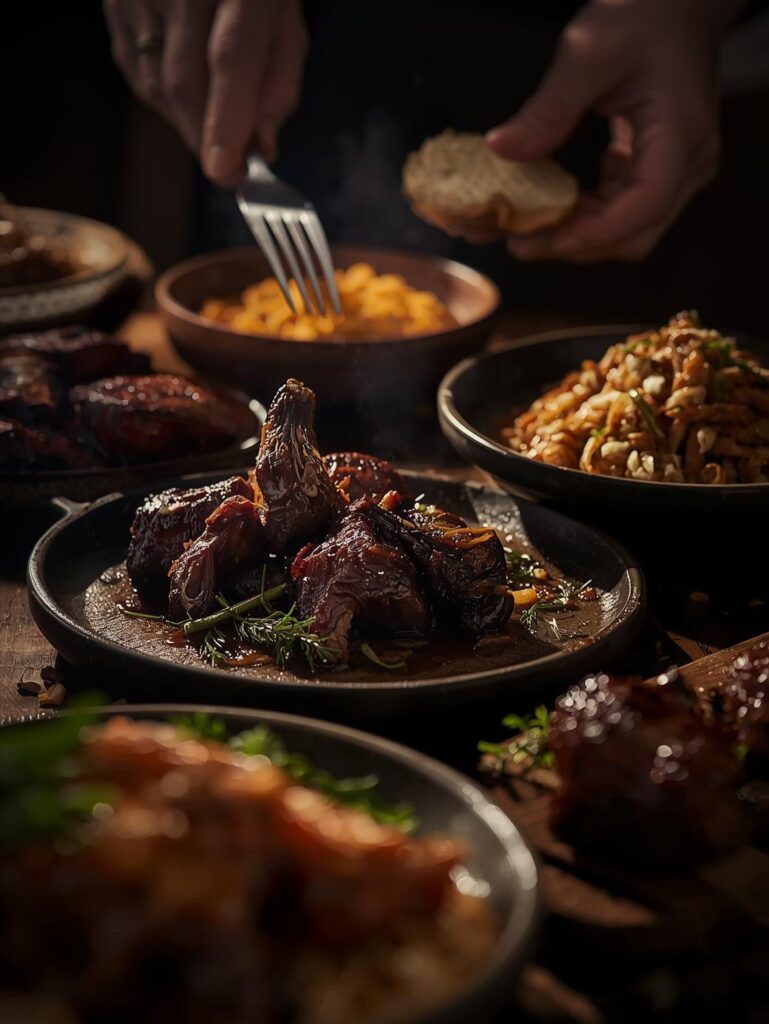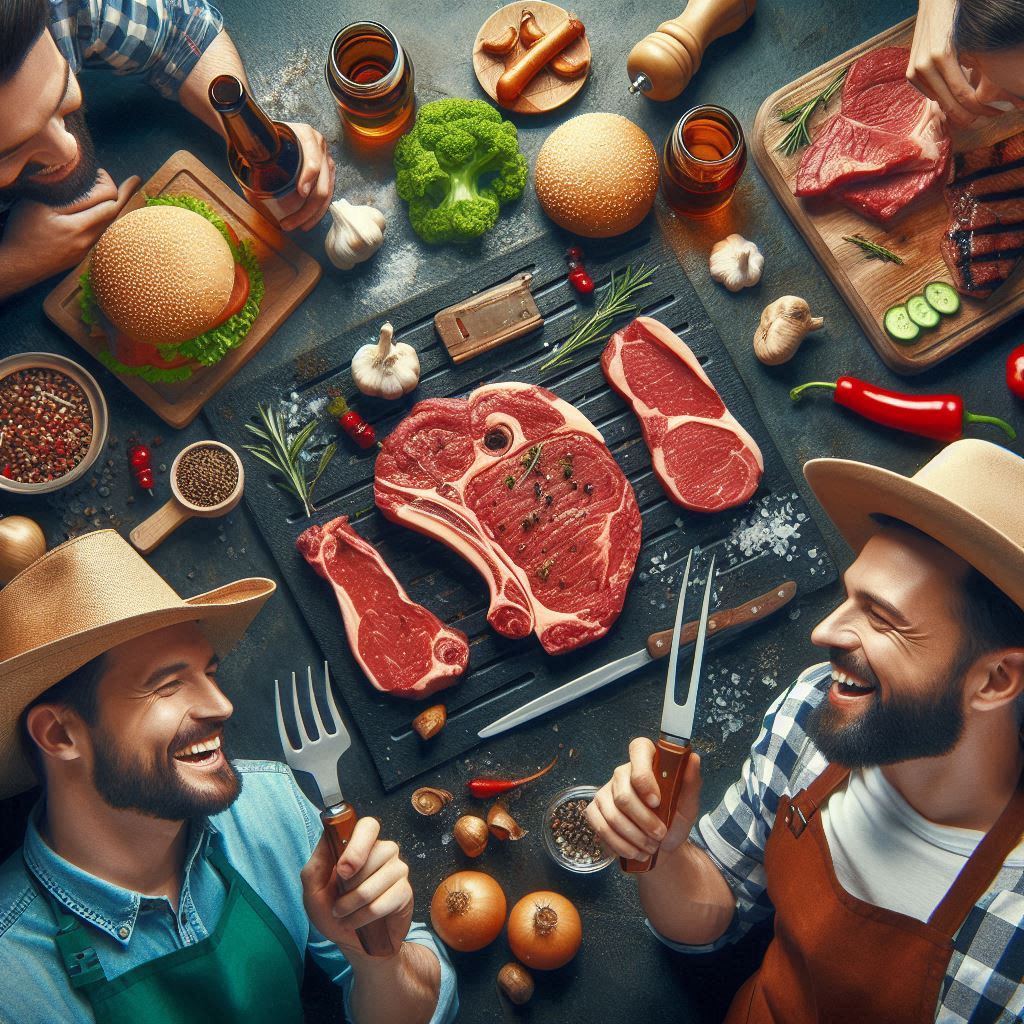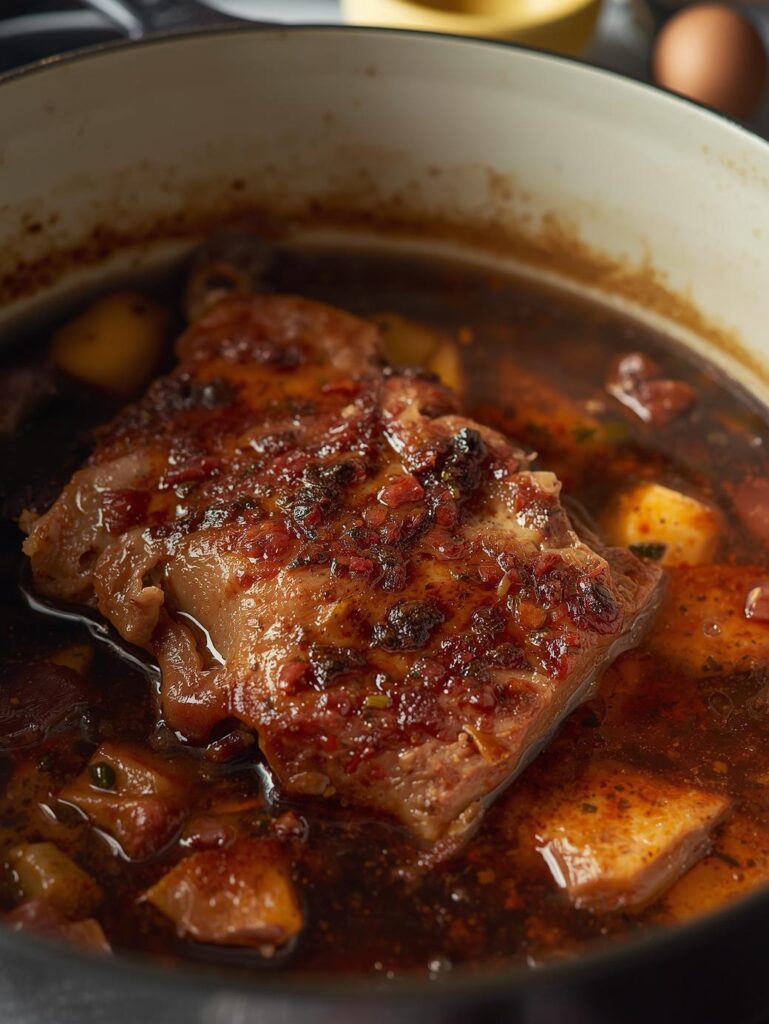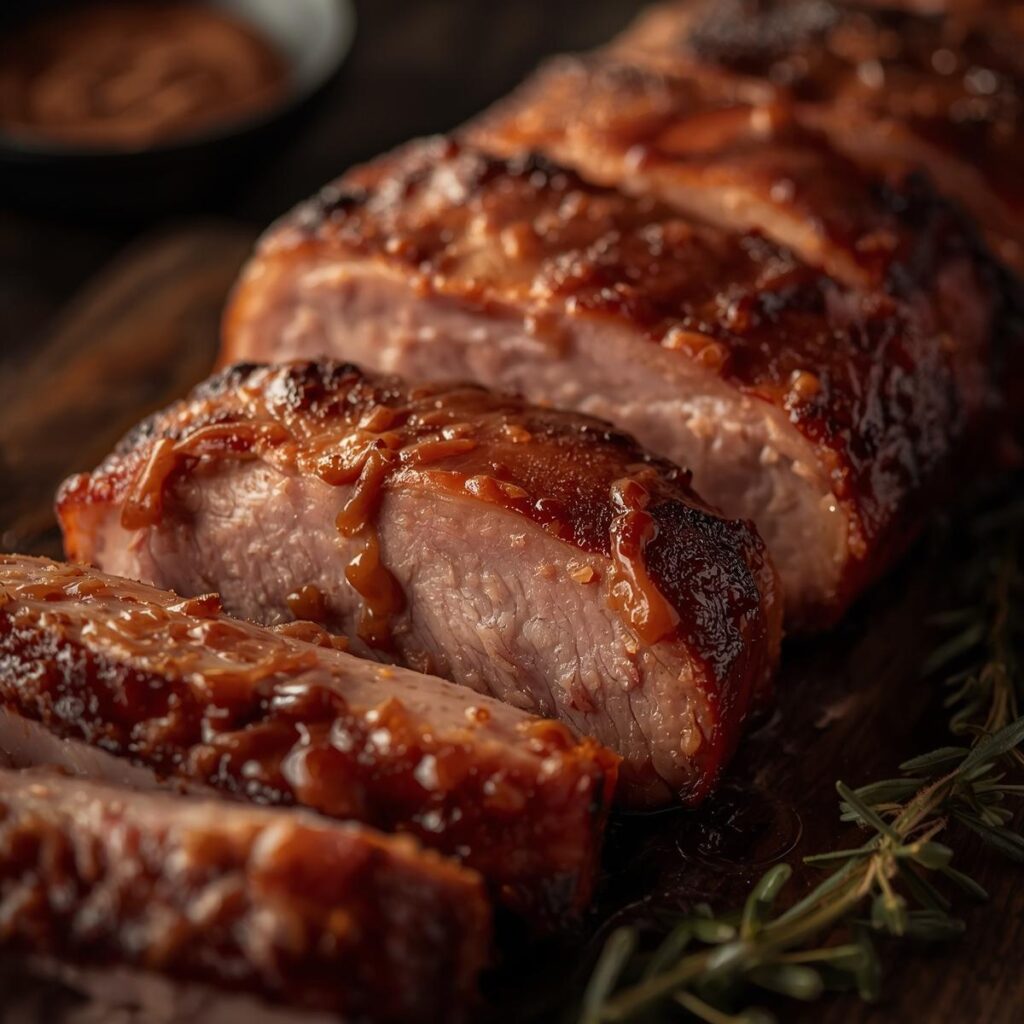Butcher’s Note: This guide reveals what professional chefs have known for decades: beef cheeks are the ultimate secret weapon for flavor. While home cooks chase expensive steaks, the pros are quietly buying up all the cheeks for their incredible marbling, collagen content, and deep beefy flavor. This isn’t just another tough cut—it’s the most transformed piece of meat when treated with patience, going from seemingly tough and gristly to impossibly tender and luxurious.
Beef Cheeks: The Most Flavorful Cut You’re Not Cooking – The Butcher’s Best-Kept Secret
“Beef cheeks are the culinary equivalent of a plot twist. They look unassuming—tough, fatty, almost intimidating—but with low, slow heat, they undergo the most dramatic transformation in all of meat cookery. The collagen doesn’t just melt; it becomes the sauce. The fat doesn’t just render; it becomes silkiness. The muscle fibers don’t just tenderize; they become butter. This is the cut that will make your guests ask, ‘What IS this?’ in the best possible way.”
Beef Cheeks: The Most Flavorful Cut You’re Not Cooking – The Butcher’s Best-Kept Secret
Download Your Free Beef Cheeks Preparation Guide
Welcome to the revelation of beef cheeks, the cut that defies all expectations and delivers flavor that expensive steaks can only dream of. While they’ve been a staple in fine dining for years, home cooks are just discovering what makes this humble cut so extraordinary. This guide will take you from butcher counter to breathtaking plate, teaching you how to transform these tough-looking muscles into the most succulent, flavorful beef experience of your life.
🎯 WHY BEEF CHEEKS ARE SPECIAL
Understanding the unique anatomy of beef cheeks explains why they outperform more expensive cuts.
⚙️ The Science of Cheek Superiority
Anatomy of Flavor
- Constant Muscle Use: As chewing muscles, beef cheeks work constantly, developing incredible marbling and collagen content that translates to both flavor and texture when cooked properly.
- Intramuscular Fat Distribution: Unlike surface fat on steaks, the fat in beef cheeks is distributed throughout the muscle in fine webs, ensuring every single bite is moist and rich.
- Collagen Concentration: Beef cheeks contain more collagen than almost any other cut. When slow-cooked, this transforms into gelatin that creates incredibly silky textures and rich sauces.
- Deep Beefy Flavor: The constant blood flow to these working muscles creates an intense, mineral-rich flavor profile that’s more complex than traditional steak cuts.
🎯 Beef Cheeks vs. Other Premium Cuts
🥩 Expensive Steaks
- Ribeye: $25-35/lb
- Filet Mignon: $30-40/lb
- Strip Steak: $20-28/lb
- Quick cooking (10-15 min)
- Texture from marbling
- Simple preparation
⭐ Beef Cheeks Advantage
- $8-12/lb cost
- More flavor complexity
- Superior texture when cooked
- 3-4 hour transformation
- Texture from collagen conversion
- Creates its own sauce
🔪 SELECTION AND PREPARATION MASTERY
Proper selection and prep are crucial for beef cheek success.
🗣️ Choosing Perfect Beef Cheeks
What to Look For
- Size and Thickness: Look for cheeks that are 1-1.5 inches thick and roughly the size of your palm. Larger cheeks may come from older animals and require longer cooking.
- Fat and Silverskin: Expect a significant fat cap and silverskin covering—this is normal. Well-trimmed cheeks should still have some external fat for flavor.
- Color and Texture: Look for deep red color with visible marbling throughout. Avoid grayish tones or dried-out surfaces.
- Source Matters: Consider buying from butchers who source from quality producers. Like with all meat quality, better animals yield better cheeks.
📊 Beef Cheeks Preparation Matrix
🎯 From Raw to Ready: The Transformation Process
| Preparation Stage | Visual Clues | Texture | Time Investment | Key Action |
|---|---|---|---|---|
| Raw State | Dark red, significant fat, tough | Firm, rubbery | 15 minutes | Trim excess fat, pat dry |
| After Searing | Deep brown crust, tightened | Very firm | 10 minutes | Develop Maillard crust |
| Mid-Cook (2 hours) | Shrunk 30%, darker | Tough but yielding | 2 hours | Check liquid levels |
| Approaching Done (3 hours) | Glossy, gelatinous surface | Tender but structured | 3 hours | Begin testing with fork |
| Perfectly Cooked | Mahogany color, glistening | Butter-tender, shreddable | 3-4 hours | Rest before serving |
🔥 THE BRAISING MASTERCLASS
Traditional braising unlocks the magic of beef cheeks through patient, low-heat cooking.
🎪 Classic Beef Cheek Braise Technique
The Set-and-Forget Method
- Aggressive Searing: Pat cheeks completely dry and sear in hot oil until deeply browned on all sides. This crust development is non-negotiable for flavor.
- Aromatic Foundation: Cook onions, carrots, celery in the same pot until softened and browned. Deglaze with red wine, scraping up all the flavorful bits.
- Low and Slow Magic: Return cheeks to pot, add herbs and enough stock to cover 2/3 of the meat. Maintain bare simmer (200°F) for 3-4 hours until fork-tender.
- Sauce Perfection: Strain cooking liquid, skim fat, and reduce to sauce consistency. The natural gelatin from the cheeks will create incredible body.
🛠️ Braising Liquid Variations
Global Flavor Profiles
- French Bistro: Red wine, beef stock, thyme, bay leaf, pearl onions, mushrooms
- Mexican Barbacoa: Chipotle, garlic, cumin, oregano, orange juice, beef stock
- Asian Fusion: Soy sauce, star anise, ginger, rice wine, brown sugar, beef stock
- Italian Style: Red wine, tomato paste, rosemary, garlic, beef stock, porcini mushrooms
🍖 MODERN COOKING METHODS
Beyond traditional braising, explore these innovative approaches to beef cheeks.
🔥 Smoked Beef Cheeks
BBQ Revolution
- Smoking Setup: Use two-zone indirect heat at 225-250°F. Oak or pecan wood complements the rich beef flavor.
- Seasoning Strategy: Apply coffee-chili rub or simple SPG (salt, pepper, garlic) 12-24 hours ahead.
- Smoke to Bark: Smoke until dark bark forms (2-3 hours), then wrap in butcher paper with beef tallow or butter.
- Final Texture: Cook to 200-205°F internal temperature. The result should be pull-apart tender with smoky flavor throughout.
⚡ Pressure Cooker Method
Speed Without Sacrifice
- Time Savings: Achieves similar results to 4-hour braise in just 60-90 minutes under pressure.
- Sear First: Always sear cheeks using sauté function before pressure cooking for maximum flavor.
- Liquid Reduction: Use 1 cup less liquid than traditional braising since minimal evaporation occurs.
- Natural Release: Allow pressure to release naturally for 15-20 minutes to prevent toughness.
- Sauce Finish: Reduce cooking liquid using sauté function after pressure cooking for perfect sauce consistency.
📋 BEEF CHEEKS DONENESS GUIDE
Recognizing Perfectly Cooked Beef Cheeks
Visual Clues
Deep mahogany color, glistening gelatinous surface, meat pulling away from connective tissue, reduced size by 40-50%.
Texture Test
Fork or thermometer probe slides in with almost no resistance, meat shreds easily with gentle pressure, no rubbery or tough areas.
Temperature Guide
200-205°F internal temperature is ideal. Use an instant-read thermometer to verify doneness beyond visual and texture cues.
Sauce Indicators
Cooking liquid should be rich, gelatinous, and coat the back of a spoon. Natural collagen release creates perfect sauce body.
🚨 BEEF CHEEKS TROUBLESHOOTING
🎯 Solving Common Beef Cheek Problems
| Problem | Symptoms | Cause | Solution |
|---|---|---|---|
| Tough Results | Rubbery, chewy texture | Insufficient cooking time/temp | Continue cooking to 200°F+, check collagen conversion |
| Greasy Mouthfeel | Oil pooling, heavy texture | Insufficient fat trimming | Trim external fat more aggressively, chill sauce to remove fat cap |
| Mushy Overcooked | Falling apart too easily | Excessive cooking time | Reduce cooking time, check doneness starting at 3 hours |
| Bland Flavor | Missing depth, one-note | Weak sear, underseasoning | Sear more aggressively, season throughout process, use flavorful liquid |
🏁 THE BEEF CHEEK REVELATION
Beef cheeks represent everything wonderful about understanding meat beyond the premium cuts. They reward patience, technique, and curiosity with some of the most memorable eating experiences possible. Once you experience the transformation from tough, unassuming cuts to butter-tender, flavor-packed masterpieces, you’ll understand why chefs guard this secret so closely.
Your willingness to explore beyond the usual steak cuts will be rewarded with incredible flavor, impressive presentations, and the satisfaction of mastering one of meat’s greatest transformations. Beef cheeks aren’t just an alternative to expensive cuts—they’re an upgrade in every way that matters: flavor, texture, and the sheer joy of culinary discovery.
Explore other economical cuts that deliver incredible flavor when cooked properly
Explore More Underrated Cuts: Continue your journey beyond the usual suspects.

